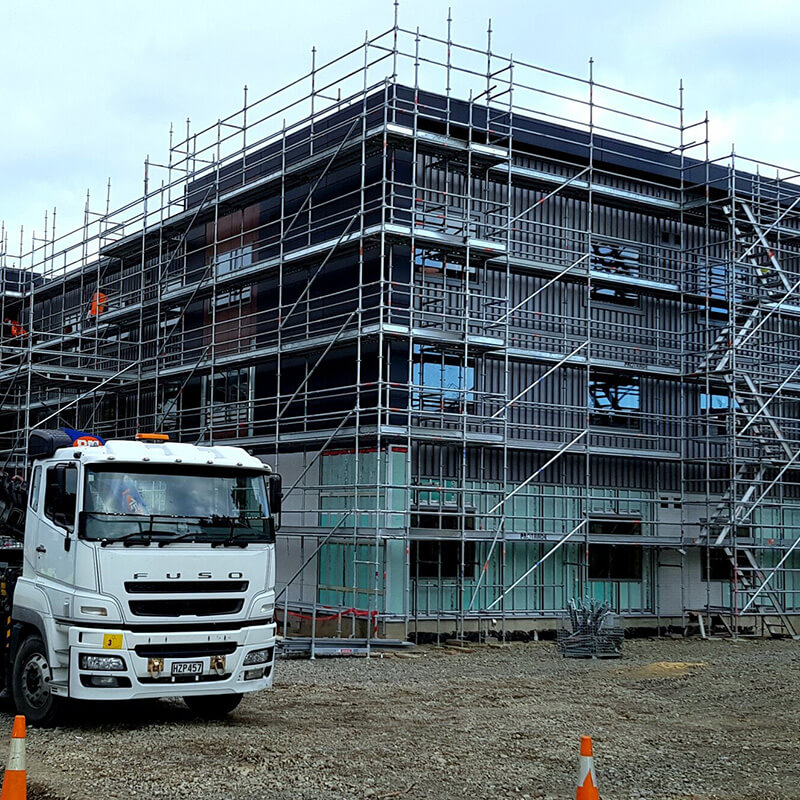In the swift-moving world of business construction, scaffolding serves as a crucial component that ensures job sites remain protected and effective. As structures get taller and projects turn into more complex, comprehending the intricacies of business scaffolding is essential vitally important for all workers participating. From providing support to allowing simpler access for construction teams, the right scaffolding system can create a significant difference in the achievement of any project.
Safety is paramount in construction, and detailed training for workers is critical in navigating the multiple types of scaffolding and the associated risks. By exploring the fundamentals of industrial scaffolding, we can investigate its function in modern construction, the types available, and the significance of adhering to safety protocols. This article aims to provide you with the knowledge required to ensure that scaffolding is not only an asset on your job site but also a indicator of compliance and safety in every aspect.
Comprehending Business Scaffolding
Industrial scaffolding is a short-term framework designed to support workers and supplies during the construction, refurbishment, or upkeep of structures. It serves as a essential tool that allows entry to above-ground areas, ensuring that employees can complete tasks securely and effectively. Given the magnitude and complexity of commercial developments, scaffolding systems must be sturdy, versatile, and adhere to security regulations. The significance of business support lies not just in enabling jobs at heights but also in enhancing overall worksite safety.
There are various types of scaffolding used in business projects, including frame support, system support, and suspended scaffolding. Every type offers unique advantages according to the specific requirements of the task. Frame support is commonly used for its simplicity of setup and stability, while system scaffolding provides more flexibility and adaptability to complex designs. Suspended scaffolding, on the contrary, is favored in situations where tasks needs to be done on high structures or intricate exteriors. Understanding these types is essential for selecting the suitable support solution that meets both security and functional requirements.
Effectively utilizing business scaffolding can significantly improve worksite security and productivity. Proper scaffolding not just provides a safe platform for workers but also helps prevent incidents related to slips. Additionally, it facilitates the orderly arrangement of materials and equipment at altitude, reducing the risk of hazards associated with cluttered workspaces. By investing in top-notch scaffolding setups and training workers on their operation, organizations can guarantee compliance with security regulations and establish a safer working environment for everyone involved in a task.
Safety Regulations and Compliance

Compliance with safety guidelines is essential for ensuring the safety of employees involved in industrial scaffolding projects. The OSHA establishes stringent regulations that oversee the use of scaffolding in construction environments. https://www.scaffolders-kent.uk/best-commercial-scaffolding-in-kent/ address various factors, including the design, use, and maintenance of scaffolding systems. Following these standards not only protects workers from likely accidents but also ensures that employers meet legal obligations, thereby avoiding heavy fines and legal problems.
One of the crucial factors of compliance is conducting routine inspections and assessments of scaffolding structures. This includes inspecting the stability of the scaffolding system, checking for defects, and ensuring that the configuration adheres to safety standards. Workers must be educated to recognize potential risks and report any deficiencies without delay. Safety inspections should be conducted before each shift or whenever shift in circumstances that may affect the integrity of the scaffolding.
In addition, employers are accountable for adequate training for their crews. This training should cover OSHA regulations, correct use of scaffolding tools, and emergency protocols. A competent workforce will significantly minimize the risk of accidents and injuries on commercial sites. By investing in proper training and compliance measures, companies can create a safer work environment, eventually leading to increased productivity and a positive reputation within the building sector.
Selecting the Appropriate Scaffold Options
Picking the appropriate scaffolding for construction projects is important for maintaining security and efficiency. Different jobs have distinct demands based on their size, function, and surroundings. For instance, a tall structure might necessitate custom scaffold systems that can support heavier weights and provide enhanced stability at altitudes. Understanding the exact needs of your task will guide you in deciding between options like adjustable scaffolding, which offers versatility, or traditional pipe and connection systems, which can be customized for various applications.
An additional important consideration is the elements used in scaffold. Aluminium scaffolding is often favored for its easy-to-handle character and ease of construction, making it suitable for jobs where mobility and rapid setup are key factors. Conversely, steel scaffold may be more fitting for industrial tasks due to its sturdiness and longevity. Assessing the project factors, such as weight-supporting capacity and site factors, will aid you make an educated choice that optimally fits your operational demands.
In conclusion, it is vital to think about the management of scaffolding installation and handling. Proper organization involves assessing location access, ensuring weight capacity capabilities, and scheduling installation to minimize disruption on crowded business sites. Working with experienced scaffold experts can provide insightful advice and personalized solutions that improve effectiveness while complying to regulatory guidelines. A well-thought-out scaffold solution not only supports building activities but also plays a significant role greatly to the total safety and effectiveness of the task.
